Canon Diggens Archive
Monuments in St Keverne Churchyard.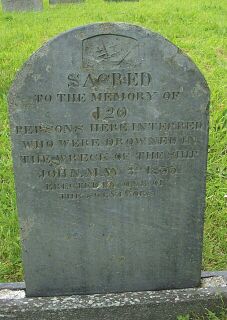
Roughly hewn on the top is a vessel in distress on a stormy sea.
A few words tell of the 120 victims resting there from the wreck of the "John" in May, 1855.
The "John" was a 468 ton, 3 masted sailing ship that traded primarily between the South West of England and the United States and Canada during the mid 1800s.
On board were 154 adult passengers, 98 children, and 16 infants, together with a crew of 19, making the total of souls on board 287.

The “Mohegan”
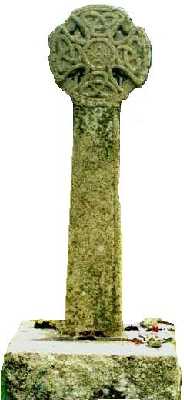 Not many yards from the above
stands a monument which tells almost as sad a
tale. It is a beautiful Cornish cross of solid
granite, and volumes are described in that one
word "Mohegan" which is engraved upon
it.
Not many yards from the above
stands a monument which tells almost as sad a
tale. It is a beautiful Cornish cross of solid
granite, and volumes are described in that one
word "Mohegan" which is engraved upon
it.
Victims of the Manacles
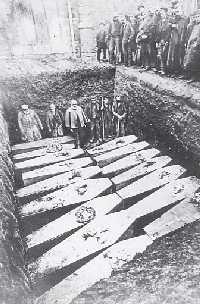

Captain Griffith of The Mohegan
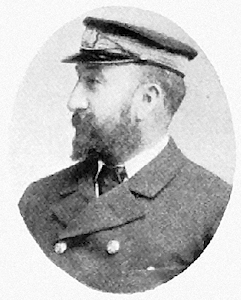

 The “Dispatch”
The “Dispatch”
Originally standing in the Churchyard where the greater of the shipwrecked lie interred, but now at the South West end of the Church is a handsome marble monument, which until the building was restored in 1809, was fixed to the right of the North Door, over what was afterwards discovered to be a blocked spiral staircase, which must have given access to the first rood loft.
The monument is embellished with trophies of war, and the representation of a ship wreck, also the following inscription:
To the memory of Major General H.G.C.Cavendish. Capt. S.G. Dukinfield. Lieut. the Honourable S. Waldegrave. Sixty non-commissioned Officers and privates of the regiment who, in returning from Spain in the DISPATCH transport unhappily perished in Coverack Cove, the 22nd of December 1809. Below the names of the Officers and other particulars appear these striking lines:
When Britain sends at
liberty's command
Her ready youth to free a stranger land,
She bears her slain in triumph to the shore,
And the proud parent shows the wounds before.
But when her sons, each form of danger past,
Strain their glad eyes to view her hills at last;
If then the tempest rolls the foaming flood,
And her own ocean 'whelms her bravest blood,
When there a Dukenfield, a Cavendish here,
and youthful Waldergrave press a wat’ry bier;
Their mourning comrades feel a moisten'd cheek,
And bid the marble their dumb sorrow speak.
Tyranti the barrier of thy rage, the deep
Aids thy fierce boast, and English mothers weep.
Her ready youth to free a stranger land,
She bears her slain in triumph to the shore,
And the proud parent shows the wounds before.
But when her sons, each form of danger past,
Strain their glad eyes to view her hills at last;
If then the tempest rolls the foaming flood,
And her own ocean 'whelms her bravest blood,
When there a Dukenfield, a Cavendish here,
and youthful Waldergrave press a wat’ry bier;
Their mourning comrades feel a moisten'd cheek,
And bid the marble their dumb sorrow speak.
Tyranti the barrier of thy rage, the deep
Aids thy fierce boast, and English mothers weep.
(Major George H. Compton Cavendish was born Oct. 14th 1784. He was the second son of the first Earl of Burlington.
Lieut. Edward W. Waldegrave was born Aug 29th, 1757. He was third son of the Earl of Waldegrave.)
The “Primrose”
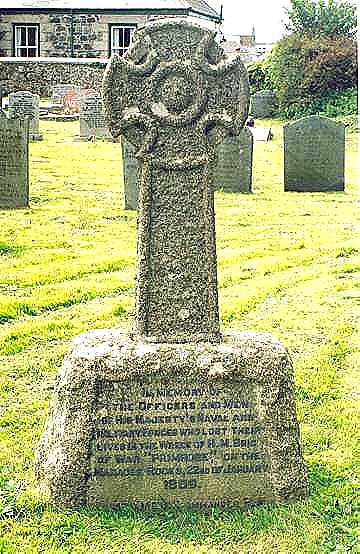 The wreck of the
"Primrose" is recorded beneath the wreck
of the "Dispatch" and the following
lines complete the entry:
The wreck of the
"Primrose" is recorded beneath the wreck
of the "Dispatch" and the following
lines complete the entry:
On the same morning about 5 o'clock the Brig of War "Primrose" (James Mein, Esq., Commander) was wrecked on the Manacle rocks. Her completement of Officers and Men consisted of 120 besides six passengers, only one poor lad was preserved from the dreadful catastrophe. From these wrecks (including the "Dispatch") 104 bodies were buried in the churchyard of the parish between Jan 24 and April 2.
The Rev. William Whitehead was Vicar at the time and the records are signed by his hand.
Happily among the living was Lieut. Col. Vivian, and we turn with relief from a scene of woe to one of chastened gladness. No sooner did Mr. John Vivian hear of the calamity than he hastened with Cap. Treweeke to Coverack. There he found the gallant Colonel, and the seven surviving privates, whom he took to his home, (with the exception of one too ill to be moved) where they received every care and attention. Between this dragoon and the boy saved from the "Primrose" there was a pathetic friendship formed.
In other documents we are glad to read the the bravery of the Porthoustock fishermen is highly praised, the Government recognizing their self-denying effort granted each helper a handsome gratuity on this sad occasion.
Mr. Grylls, Cap Norris with part of his troop of the 13th Dragoons under Sergeant Connor from Helston, aided by Lieut Cock of Coverack Signal Station rendered valuable assistance. It is said that fifty coffins were sent from Helston for the internments.
From the “Dispatch” a number of horses were washed ashore. They were buried on the Meirs near the Coastguard rocket poles. The mound ridge is quite conspicuous.